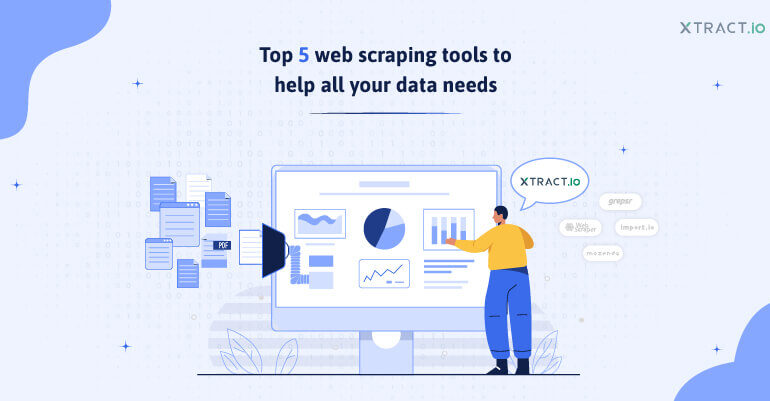- by SEO

Web scraping has become an invaluable tool for businesses looking to gather insights from various online sources such as competitors’ websites, customer reviews, social media platforms, and more. While there are numerous pre-built scraping tools web change monitor available, building a custom web scraping tool tailored to your specific needs can provide greater flexibility, efficiency, and scalability. In this article, we’ll walk you through the process of building a custom web scraping tool for your business, covering the key steps from planning and design to implementation and deployment.
1. Identify Your Scraping Requirements
The first step in building a custom web scraping tool is to clearly define your scraping goals and requirements. Ask yourself what kind of data you need to collect, from which websites, and how frequently. Are you looking to scrape product prices from e-commerce websites, collect customer sentiment from reviews, or track competitors’ social media posts? Understanding your data needs will help you determine the scope of your scraping project, the complexity of the websites you’ll target, and the type of data you want to extract (such as text, images, or tables). Additionally, consider the scale of your operation—will you be scraping data from just a few pages or thousands of pages across multiple sites? Once you have a clear understanding of your requirements, you can start choosing the right tools and technologies for the job.
2. Choose the Right Programming Language and Framework
Building a custom web scraper typically involves programming, and the choice of language and framework depends on your team’s technical expertise and the complexity of the scraping project. Popular languages for web scraping include Python, JavaScript, and Ruby, with Python being the most widely used due to its simplicity and the availability of powerful scraping libraries. Python frameworks such as Scrapy and BeautifulSoup are particularly useful for beginners and experienced developers alike. Scrapy is an open-source framework designed for scraping large volumes of data and is ideal for projects that require speed and scalability. BeautifulSoup, on the other hand, is more suited for smaller-scale scraping and is simple to use when combined with Python’s requests module. Alternatively, if you need to scrape data from dynamic sites (those that rely heavily on JavaScript), you may need to use tools like Selenium or Puppeteer, which can simulate user interactions and handle JavaScript rendering.
3. Implementing the Scraping Logic
Once you’ve chosen your tools and technologies, the next step is to implement the scraping logic. This involves writing code that will interact with the target websites, extract data, and format it into a structured format (e.g., CSV, JSON, or database). The basic process of web scraping includes sending HTTP requests to the website, parsing the HTML response, and extracting relevant information using CSS selectors, XPath, or regular expressions. For dynamic websites, you might need to handle AJAX requests, deal with CAPTCHAs, or manage session cookies. One important consideration here is setting up error-handling mechanisms, as websites can change their structure or block scrapers. It’s important to test your scraper to ensure it functions correctly under various conditions and that it can handle issues such as missing data, slow page loads, or website downtime. Using logging and retry mechanisms can help maintain the stability of your tool during data extraction.
4. Respecting Website Policies and Legal Boundaries
While building a custom web scraping tool offers great flexibility, it also comes with a responsibility to respect the legal and ethical boundaries associated with web scraping. Before you begin scraping any website, you should review its robots.txt file to see if there are any restrictions on automated data collection. Many websites explicitly forbid scraping in their Terms of Service, so it’s important to obtain permission or avoid scraping sites that prohibit it. Additionally, you should consider the privacy and security of the data you’re scraping, especially if it includes sensitive or personal information. Always ensure your scraper complies with relevant laws such as GDPR (General Data Protection Regulation) or CCPA (California Consumer Privacy Act) to avoid legal consequences. Furthermore, consider the ethical implications of scraping, such as how your scraping activities could affect website performance or user experience. Striking a balance between effective data extraction and responsible use is crucial.
5. Automating and Scaling Your Scraping Operations
Once your custom web scraper is developed and tested, it’s time to think about automation and scaling. For businesses that require frequent or large-scale data extraction, automating the scraping process is essential. You can schedule scraping tasks using cron jobs or cloud-based schedulers to run the scraper at regular intervals (e.g., daily, weekly, or monthly). Additionally, if you need to scale your scraping operations to handle multiple websites or a large volume of data, you may want to explore cloud solutions or distributed scraping architectures. Tools like Docker can help you deploy and manage your scrapers in isolated environments, while platforms like AWS or Google Cloud provide the infrastructure needed for scalable data collection. To avoid overloading the websites you’re scraping, you should also implement techniques like rotating proxies, setting reasonable scraping intervals, and respecting website rate limits. By automating and scaling your scraping tool, you can gather data more efficiently and consistently without manual intervention.
Conclusion
Building a custom web scraping tool for your business can significantly enhance your data collection process, providing you with valuable insights and a competitive edge. By carefully planning your scraping requirements, selecting the appropriate technologies, implementing efficient scraping logic, and ensuring compliance with legal and ethical guidelines, you can develop a robust solution tailored to your needs. Furthermore, automating and scaling your scraper allows for continuous data extraction without compromising website performance or violating policies. With the right approach and tools, your custom web scraping tool can become a powerful asset, helping your business stay informed and data-driven in an increasingly competitive landscape.